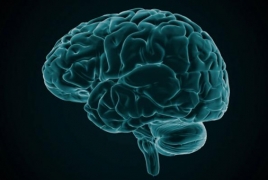
Some functional MRI, or fMRI, brain imaging studies have indicated, for example, that when you hear a metaphor such as “she had a rough day,” regions of the brain associated with tactile experience activate. If you hear, “he’s so sweet,” areas associated with taste activate. And when you hear action verbs used in a metaphorical context, like “grasp a concept,” regions involved in motor perception and planning activate.
The new study in the journal Brain Research builds on this research by looking at when, exactly, different regions of the brain activate in metaphor comprehension and what that reveals about the way we understand language, Futurity reports.
Researchers have found that on average, people use a metaphor every 20 words, says Vicky Lai, an assistant professor of psychology and cognitive science at the University of Arizona. As director of the Cognitive Neuroscience of Language Laboratory in the psychology department, Lai is interested in how the brain processes metaphors and other types of language.
Her latest study used EEG, or brainwave studies, to record electrical patterns in the brain when participants encountered metaphors containing action content, like “grasp the idea” or “bend the rules.”
Study participants saw three different sentences on a computer screen—one word at a time. One sentence described a concrete action, such as, “The bodyguard bent the rod.” Another was a metaphor using the same verb: “The church bent the rules.” In the third sentence, the verb was replaced with a more abstract word that conveyed the same meaning as the metaphor: “The church altered the rules.”
When participants saw the word “bent” used in both the literal and metaphorical context, it evoked a similar response in the brain, with the sensory-motor region being activated almost immediately—within 200 milliseconds—of the verb appearing on the screen. That response differed when “altered” replaced “bent.”

